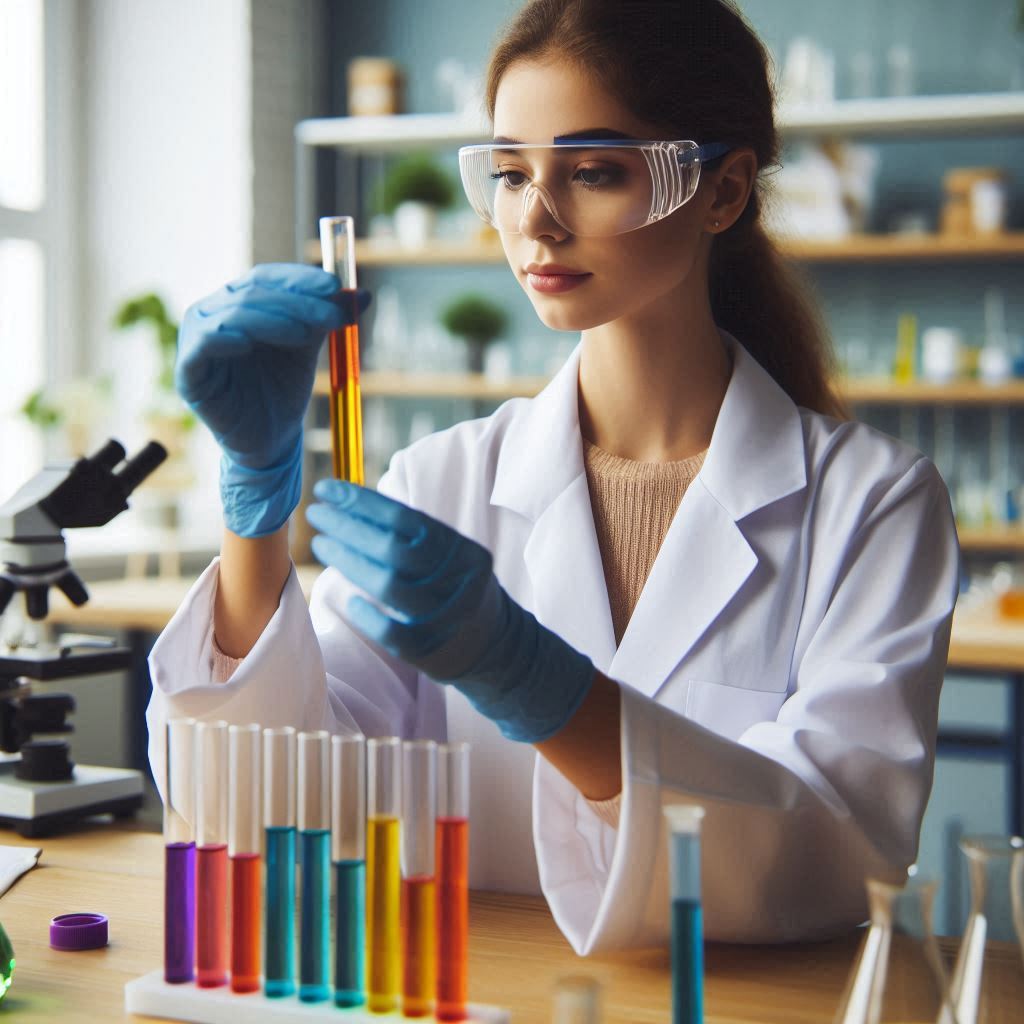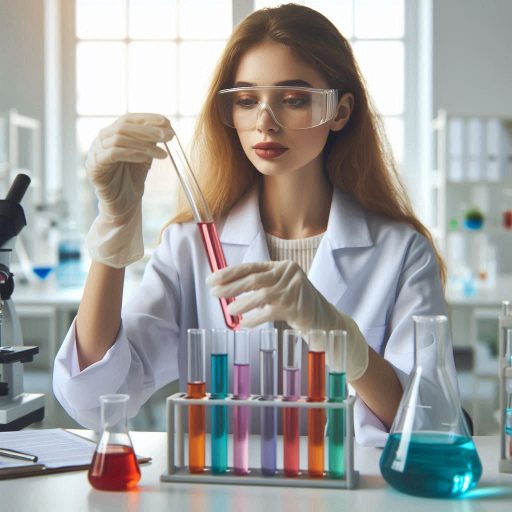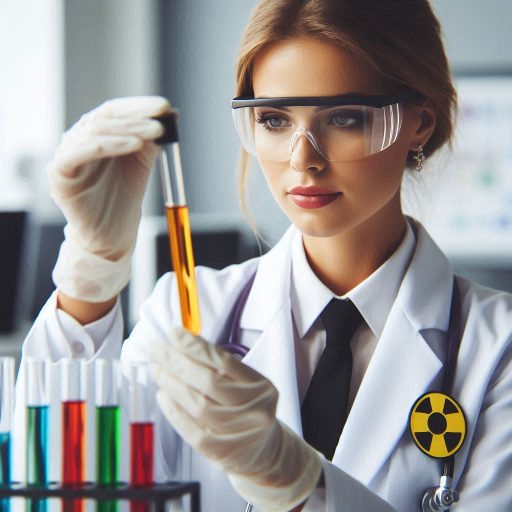Introduction
Toxicology in forensic science is the study of chemicals and substances to determine their effects in criminal cases.
It involves analyzing biological samples, such as blood and urine, to detect toxins, drugs, and poisons.
Forensic toxicologists play a vital role in identifying substances that may have contributed to a person’s death or impairment.
The importance of toxicology in criminal investigations cannot be overstated.
Toxicological analyses provide crucial evidence in cases of overdose, poisoning, and substance abuse.
This evidence helps law enforcement agencies establish the circumstances surrounding a crime, aiding in prosecution and defense strategies.
A brief history of toxicology in forensic science reveals its evolution over centuries.
In the 19th century, toxicology emerged as a distinct scientific discipline, driven by high-profile poisoning cases.
Notable figures like Mathieu Orfila, known as the father of forensic toxicology, laid the groundwork for modern practices.
His work in identifying poisons and their effects established toxicology as a critical component of forensic investigations.
These developments enhance the accuracy and reliability of toxicological analyses, ensuring justice in criminal cases.
Understanding toxicology‘s role in forensic science is essential for appreciating its impact on the legal system and public safety.
Types of Toxins
Different Types of Toxins Commonly Encountered
Forensic toxicologists encounter various types of toxins in their work.
These toxins can be classified into several categories.
Chemical toxins include substances like heavy metals, pesticides, and industrial chemicals.
Biological toxins originate from living organisms, such as bacteria, fungi, and plants.
Common examples of chemical toxins include lead and mercury.
These heavy metals can cause severe health issues.
Pesticides, such as organophosphates, are also significant concerns in forensic cases.
They can lead to poisoning and even death.
Biological toxins, like botulinum toxin and ricin, are particularly dangerous.
Botulinum toxin can cause paralysis and respiratory failure.
Ricin, derived from castor beans, can be lethal in small amounts.
Understanding these toxins is crucial for forensic investigations.
Moreover, synthetic drugs such as opioids and amphetamines present serious risks.
Forensic toxicologists frequently analyze these substances in overdose cases.
Their prevalence in the drug abuse epidemic highlights the importance of toxicological analysis in forensic science.
How Toxins Enter the Body
Toxins can enter the body through several pathways.
The most common routes include ingestion, inhalation, and dermal absorption.
Each route has distinct implications for the body‘s response to the toxin.
Ingestion occurs when a person consumes contaminated food or drink.
This route is prevalent in cases involving pesticides or heavy metals.
Toxins enter the gastrointestinal tract and are absorbed into the bloodstream.
Inhalation happens when toxins are present in the air.
For instance, carbon monoxide and volatile organic compounds can be inhaled.
This route is critical in cases involving smoke inhalation or chemical exposure in confined spaces.
Dermal absorption occurs when toxins contact the skin.
This route can be significant for substances like pesticides or certain industrial chemicals.
Skin exposure can lead to systemic effects, especially if the toxin penetrates deeply.
Forensic toxicologists analyze these exposure routes to determine how toxins entered the body.
This information is vital for establishing cause and manner of death in forensic cases.
Effects of Toxins on the Body
The effects of toxins on the body can vary widely based on several factors.
These include the type of toxin, the route of exposure, and individual susceptibility.
Toxins can cause acute or chronic health effects.
Acute exposure often leads to immediate symptoms.
For example, ingestion of a poisonous substance may cause nausea, vomiting, or diarrhea.
Inhalation of carbon monoxide can result in headaches, dizziness, and confusion.
Understanding these symptoms helps forensic toxicologists identify the toxin involved.
Chronic exposure can lead to long-term health issues.
For instance, lead exposure can cause neurological damage over time.
Individuals with chronic exposure to certain pesticides may develop endocrine disruptions.
Moreover, toxins can affect different organ systems in the body.
Some toxins primarily impact the nervous system, while others target the liver or kidneys.
This specificity helps forensic toxicologists determine the nature of the exposure.
Understanding different types of toxins is essential in forensic science.
Toxins can enter the body through ingestion, inhalation, or dermal absorption.
Their effects can range from acute symptoms to chronic health problems.
Forensic toxicologists play a vital role in investigating these cases, contributing to public safety and justice.
Role of toxicologists in forensic investigations
Collection and Analysis of Toxicological Evidence
Toxicology plays a vital role in forensic science.
The collection and analysis of toxicological evidence are crucial for solving crimes.
Forensic toxicologists gather samples from various sources.
These sources may include blood, urine, hair, or tissues from victims or suspects.
Proper collection methods ensure accurate results.
Forensic experts follow strict protocols to avoid contamination.
They maintain a chain of custody to preserve the integrity of evidence.
Each sample must be carefully labeled and documented.
This documentation is essential for legal proceedings.
Once collected, toxicologists analyze the samples using advanced techniques.
They may employ gas chromatography-mass spectrometry (GC-MS) for detecting drugs and toxins.
This method provides highly sensitive and accurate results.
Toxicologists also use liquid chromatography for various compounds that may not vaporize easily.
The analysis reveals the presence and concentration of substances.
Toxicologists identify illicit drugs, alcohol, and poisons in the samples.
This information helps establish the cause of death or impairment in living individuals.
Interpretation of Toxicology Results
Interpreting toxicology results is a critical step in forensic investigations.
Toxicologists must evaluate the data in the context of the case.
They consider factors such as the individual‘s medical history and circumstances surrounding the incident.
Toxicology results can be complex, requiring specialized knowledge.
Toxicologists analyze the relationships between drug concentrations and their effects.
They identify whether the levels present are therapeutic, toxic, or lethal.
Understanding these distinctions is essential for accurate case assessments.
In cases of overdose, toxicologists determine which substances contributed to the fatality.
They provide insights into drug interactions and their potential impacts.
This interpretation aids investigators in understanding the events leading to an incident.
Toxicologists must also be aware of legal standards.
They ensure that their interpretations comply with forensic guidelines.
Clear and precise interpretations are crucial for court proceedings.
Toxicologists must communicate their findings effectively to law enforcement and legal professionals.
Providing Expert Testimony in Court
Forensic toxicologists often provide expert testimony in court.
This role requires not only scientific expertise but also strong communication skills.
Toxicologists explain their findings clearly to judges and juries.
They translate complex toxicological data into understandable terms.
During testimony, toxicologists may be asked to clarify their methods and results.
They must defend their analyses against scrutiny from opposing counsel.
This requires a deep understanding of both the science and legal implications.
Effective expert testimony can significantly influence a case’s outcome.
Judges and juries rely on toxicologists to provide objective insights.
Their expertise helps establish the presence of substances and their potential effects.
Toxicology is a crucial component of forensic science.
The collection and analysis of toxicological evidence provide essential information for investigations.
Interpreting these results accurately is vital for understanding the circumstances of a case.
Furthermore, providing expert testimony in court enables toxicologists to convey their findings effectively.
Together, these elements ensure that justice is served in cases involving toxic substances.
Read: Interdisciplinary Research: Botany and Other Sciences
Common methods of toxicological analysis
Blood Analysis
Blood analysis is a crucial aspect of toxicology in forensic science.
Forensic toxicologists examine blood samples to detect the presence of drugs and poisons.
This analysis provides valuable information about an individual’s exposure to toxic substances.
Blood tests can reveal both current and past substance use.
Forensic labs use various techniques for blood analysis.
Enzyme-linked immunosorbent assays (ELISA) identify specific drugs and their metabolites.
Gas chromatography-mass spectrometry (GC-MS) offers a more detailed analysis, allowing for the identification of unknown substances.
This method provides high sensitivity and specificity, making it a gold standard in forensic toxicology.
Blood analysis also helps determine the blood alcohol concentration (BAC) in cases of intoxication.
This information can be vital in legal proceedings, especially in driving under the influence (DUI) cases.
Accurate BAC readings help establish liability and assess impairment levels.
Urine Analysis
Urine analysis is another common method in forensic toxicology.
This technique allows forensic scientists to detect drugs and their metabolites in the body.
Urine tests can reveal substance use over a longer period compared to blood tests.
Forensic toxicologists often use immunoassay screening tests for initial urine analysis.
These tests quickly identify the presence of specific drugs or drug classes.
If initial tests are positive, confirmatory tests like GC-MS follow for accurate identification.
Urine analysis is particularly useful in workplace drug testing and legal cases.
Employers may conduct random urine tests to ensure a drug-free workplace.
In legal scenarios, urine tests can provide evidence of substance abuse or intoxication.
Hair Analysis
Hair analysis serves as a valuable tool for toxicologists in forensic science.
This method allows forensic scientists to detect drug use over an extended period.
Hair samples can reveal a history of substance use, providing insights into an individual’s lifestyle.
Toxicologists analyze hair samples by cutting them into segments.
Each segment represents a specific time frame, allowing for a timeline of substance use.
Techniques like inductively coupled plasma mass spectrometry (ICP-MS) help detect heavy metals and drugs in hair.
Hair analysis is beneficial in cases where other biological samples are unavailable.
It provides a non-invasive method to assess drug exposure and can withstand decomposition over time.
However, results can vary based on hair color, length, and growth rate.
Toxicological Sampling Techniques
Toxicological sampling techniques are critical in forensic investigations.
Collecting samples accurately ensures reliable results and interpretations.
Various biological samples can be analyzed, including blood, urine, hair, and even saliva.
Proper sampling techniques help avoid contamination and ensure chain-of-custody integrity.
Forensic toxicologists follow strict protocols when collecting samples.
This includes using sterile equipment and labeling samples clearly.
In addition to biological samples, toxicologists may analyze environmental samples.
Soil, water, and food samples can provide evidence of poisoning or exposure to toxic substances.
These analyses help establish the source and extent of contamination.
In summary, toxicology plays a vital role in forensic science through various analytical methods.
Blood analysis provides immediate insights into recent substance use.
Urine analysis offers a broader view of drug exposure over time.
Hair analysis reveals a history of substance use, while proper sampling techniques ensure accuracy.
Together, these methods enhance the understanding of toxicological evidence in forensic investigations.
Read: Women in Botany: Celebrating Pioneers and Leaders

Challenges faced in toxicology in forensic science
Contamination of Samples
Contamination of samples poses a significant challenge in forensic toxicology.
It can compromise the integrity of toxicological evidence and lead to inaccurate conclusions.
Contaminants can originate from various sources, including the environment, handling procedures, or laboratory equipment.
Even trace amounts of contaminants can affect the results of toxicological analyses.
To minimize contamination, forensic scientists must follow strict protocols.
They should use clean, sterile containers for sample collection and storage.
Wearing gloves and using dedicated tools for each sample can help reduce cross-contamination risks.
Additionally, ensuring that workspaces are clean and free from potential contaminants is essential for maintaining sample integrity.
Proper training in handling and processing samples is crucial for forensic professionals.
They must understand the potential sources of contamination and how to prevent them.
Regular audits of laboratory practices can help identify areas needing improvement.
Handling and Storage of Toxicological Evidence
Handling and storage of toxicological evidence require careful attention to detail.
Forensic scientists must adhere to specific protocols to preserve the integrity of evidence.
Proper collection, labeling, and documentation are vital during the evidence-gathering process.
Once collected, samples should be stored under appropriate conditions.
Temperature, light exposure, and humidity can all affect the stability of toxicological evidence.
For instance, some substances degrade when exposed to heat or light.
Therefore, storing samples in dark, cool environments is essential for preserving their integrity.
Moreover, maintaining a clear chain of custody is critical for toxicological evidence.
This chain documents who collected, handled, and analyzed the samples.
It ensures accountability and traceability, which are essential in legal proceedings.
Any breach in the chain of custody can undermine the credibility of the evidence.
Interpretation of Complex Toxicology Reports
Interpreting complex toxicology reports is a crucial skill for forensic scientists.
These reports often contain extensive data that require careful analysis.
Toxicology reports may detail the presence and concentrations of various substances, making interpretation challenging.
Forensic professionals must have a solid understanding of toxicology principles.
They should be familiar with common drugs, their effects, and potential interactions.
Additionally, recognizing the limitations of the data is vital for accurate interpretation.
Some substances may have overlapping metabolic pathways, complicating the analysis.
Collaboration with toxicologists can enhance the interpretation process.
Toxicologists can provide insights into specific compounds and their implications for a case.
This collaboration is especially important in complex cases involving multiple substances.
Moreover, forensic professionals must communicate their findings clearly and concisely.
They should be able to explain complex toxicological data in simple terms.
This ability is crucial when presenting evidence in court or discussing findings with non-experts.
Toxicology plays a vital role in forensic science.
Contamination of samples, proper handling and storage, and interpretation of complex reports are essential considerations.
Forensic scientists must follow strict protocols to ensure the integrity of toxicological evidence.
By understanding the nuances of toxicology, professionals can provide accurate and reliable findings.
Ultimately, effective toxicological analysis contributes to justice and public safety.
Forensic scientists must continuously refine their skills and knowledge to navigate the complexities of toxicology in forensic science.
Read: How Climate Change Is Impacting Plant Research
Gain More Insights: Future Trends in Biomedical Engineering Careers
Famous cases involving toxicology
Case Studies Where Toxicology Played a Crucial Role in Solving Crimes
Toxicology has been instrumental in numerous criminal investigations.
For instance, in the case of Anna Nicole Smith, her death sparked significant media attention.
Toxicological analysis revealed the presence of several prescription drugs.
This information helped investigators determine the circumstances surrounding her overdose.
In another notable case, the 1994 murder of Nicole Brown Simpson and Ron Goldman, toxicology reports provided critical insights.
Autopsy results showed that Brown had traces of various drugs in her system.
This finding played a role in understanding her lifestyle and potential vulnerabilities.
The death of Heath Ledger also highlighted the importance of toxicology.
Toxicological tests revealed a lethal combination of medications in his system.
This finding led to discussions about drug interactions and potential dangers.
Investigators used these insights to raise awareness about prescription drug misuse.
In the case of the Boston Marathon bombing, toxicologists analyzed blood samples from victims.
They identified toxic substances that contributed to injuries.
This analysis informed medical personnel about potential treatments and interventions.
It also helped law enforcement understand the chemical agents used in the attack.
Impact of Toxicology Findings on Legal Outcomes
Toxicology findings significantly impact legal outcomes in criminal cases.
For example, toxicological evidence can influence jury decisions in trials.
If toxicology reports show a victim was intoxicated, it may affect perceptions of culpability.
This information can either exonerate or implicate defendants based on their actions.
In cases involving driving under the influence (DUI), toxicology tests provide essential evidence.
Blood alcohol concentration (BAC) levels determine legal implications for drivers.
High BAC levels can lead to severe penalties, including fines and imprisonment.
Consequently, toxicological evidence is vital for establishing guilt in DUI cases.
Toxicology plays a crucial role in cases involving overdose deaths.
Prosecutors may charge individuals with manslaughter if they supplied lethal substances.
Toxicological reports help establish causation between the substances and the victim’s death.
This evidence is crucial for obtaining convictions in drug-related cases.
Toxicology findings can also lead to wrongful convictions being overturned.
In some instances, post-conviction toxicological analysis has exonerated innocent individuals.
New techniques, such as advanced DNA analysis combined with toxicology, reveal previously unnoticed evidence.
This collaboration helps ensure that justice is served.
Moreover, toxicological evidence influences sentencing.
Judges may consider the severity of the toxins involved when determining penalties.
Cases involving highly toxic substances often result in harsher sentences for offenders.
Toxicology plays a vital role in forensic science and criminal investigations.
Case studies demonstrate its significance in solving crimes and understanding circumstances surrounding deaths.
The impact of toxicology findings on legal outcomes underscores its importance in the justice system.
By providing critical evidence, toxicology helps ensure fair trials and justice for victims.
As forensic techniques continue to evolve, toxicology will remain a cornerstone of criminal investigations and legal proceedings.
Transform Your Career Today
Unlock a personalized career strategy that drives real results. Get tailored advice and a roadmap designed just for you.
Start NowRead: Exploring the Different Branches of Geology
Future developments in toxicology
Advancements in Toxicological Analysis Techniques
Toxicology plays a vital role in forensic science.
Recent advancements in toxicological analysis techniques have greatly improved detection methods.
Techniques like liquid chromatography-mass spectrometry (LC-MS) enhance sensitivity and accuracy.
Forensic toxicologists can identify substances at lower concentrations than ever before.
Gas chromatography (GC) remains a fundamental technique in toxicology.
It effectively separates volatile compounds for analysis.
Combining GC with mass spectrometry (GC-MS) provides reliable identification of complex mixtures.
These advancements enable toxicologists to analyze a wide range of substances efficiently.
Moreover, immunoassays have gained popularity in toxicology.
These tests offer rapid screening for specific drugs and toxins.
They help forensic experts quickly determine potential substance involvement in cases.
The combination of immunoassays with confirmatory methods strengthens overall analytical reliability.
Advancements in sampling techniques enhance the reliability of toxicological data.
Researchers now utilize hair, nails, and saliva as alternative biological matrices.
These samples provide valuable information about long-term substance exposure.
By diversifying sample sources, toxicologists can construct a more comprehensive exposure profile.
Integration of Technology in Toxicology Research
Technology integration in toxicology research has transformed forensic analysis.
High-throughput screening technologies allow toxicologists to analyze multiple samples simultaneously.
This capability accelerates data collection and analysis, improving case turnaround times.
Data analysis software also plays a crucial role in modern toxicology.
Advanced algorithms help identify patterns in toxicological data.
These tools assist forensic scientists in making informed decisions based on complex datasets.
Automated systems reduce human error, ensuring greater accuracy in results.
Artificial intelligence (AI) is increasingly influencing toxicology research.
Machine learning algorithms can predict toxicity based on chemical structure.
This innovation streamlines the risk assessment process, allowing for quicker evaluations.
AI technologies also help identify potential drug interactions, enhancing safety assessments.
The use of digital databases enhances information sharing among forensic scientists.
These databases contain toxicological profiles and case studies, promoting collaboration.
Such resources enable experts to stay updated on emerging substances and trends in forensic toxicology.
Potential Future Applications of Toxicology in Forensic Science
The future of toxicology in forensic science holds exciting possibilities.
One potential application is the development of portable testing devices.
These devices could enable on-site toxicological analysis at crime scenes.
Rapid testing would facilitate quicker investigations and improve public safety.
Another promising area is the use of nanotechnology in toxicology.
Nanoparticles could enhance the sensitivity of detection methods.
This advancement would enable the identification of even trace amounts of toxins and drugs.
Moreover, expanding the understanding of toxicogenomics will enhance forensic analysis.
By studying the interaction between genetics and toxic exposure, toxicologists can better interpret results.
This knowledge will help establish clearer links between substances and individual reactions.
Finally, integrating toxicology with other forensic disciplines offers potential synergies.
Collaborating with forensic pathology, anthropology, and chemistry can yield more comprehensive insights.
This interdisciplinary approach will strengthen forensic investigations, ultimately improving justice outcomes.
Advancements in toxicological analysis techniques, technology integration, and future applications are reshaping forensic science.
As techniques improve and technology evolves, toxicology will play an increasingly critical role in investigations.
These innovations will enhance the reliability of forensic evidence and support justice efforts.
Understanding these trends is essential for professionals working in forensic toxicology and related fields.
Conclusion
Toxicology plays a vital role in forensic science, aiding criminal investigations by determining the presence of drugs and toxins.
Forensic toxicologists analyze biological samples, such as blood and urine, to identify substances that may have contributed to a person‘s death or impairment.
Their work helps establish crucial evidence in legal cases, ensuring justice is served.
The importance of toxicology extends beyond detecting substances; it also involves understanding their effects on the human body.
By determining how a substance interacts with biological systems, toxicologists provide critical insights into causation and intent.
This information can influence legal outcomes, making toxicology an essential component of forensic science.
Encouraging further research and advancements in the field is crucial for enhancing the accuracy and efficiency of toxicological analyses.
Emerging technologies, such as mass spectrometry and high-resolution analytical techniques, hold great promise for improving detection capabilities.
Investing in these innovations will strengthen forensic investigations and help law enforcement agencies solve crimes more effectively.
Toxicology plays a significant role in criminal investigations, providing essential evidence and insights.
As the field continues to evolve, ongoing research and advancements will further empower forensic toxicologists.




